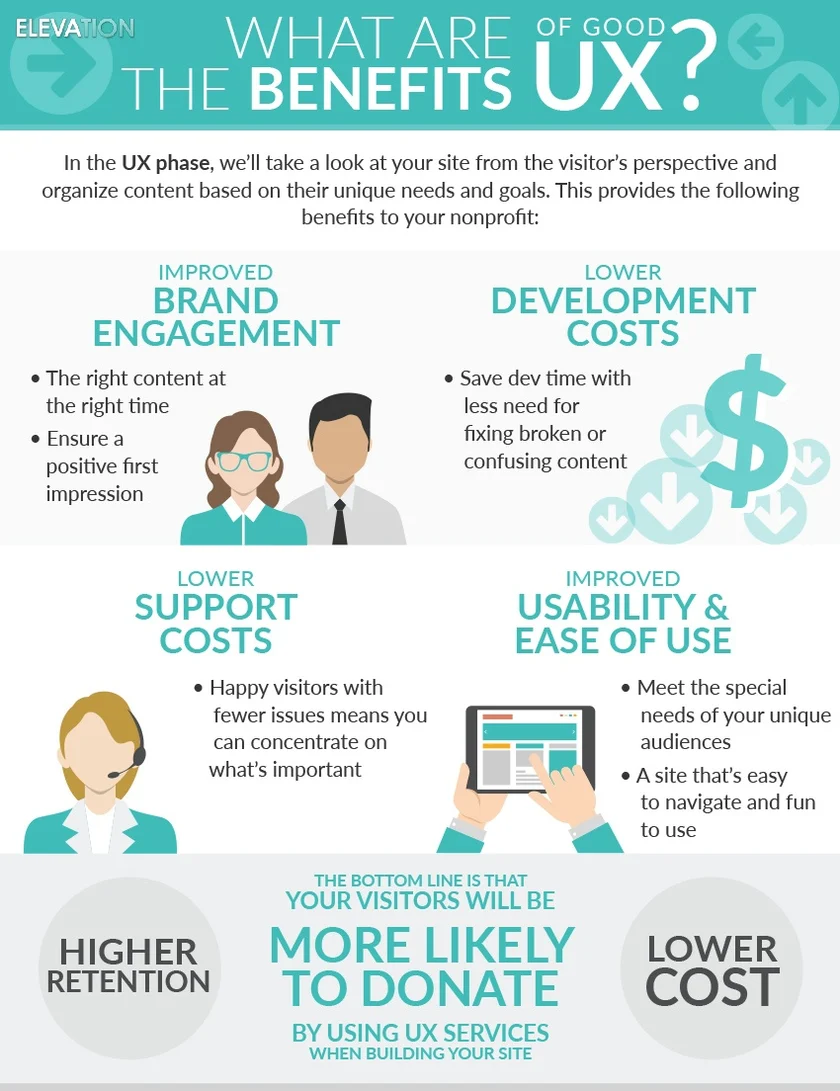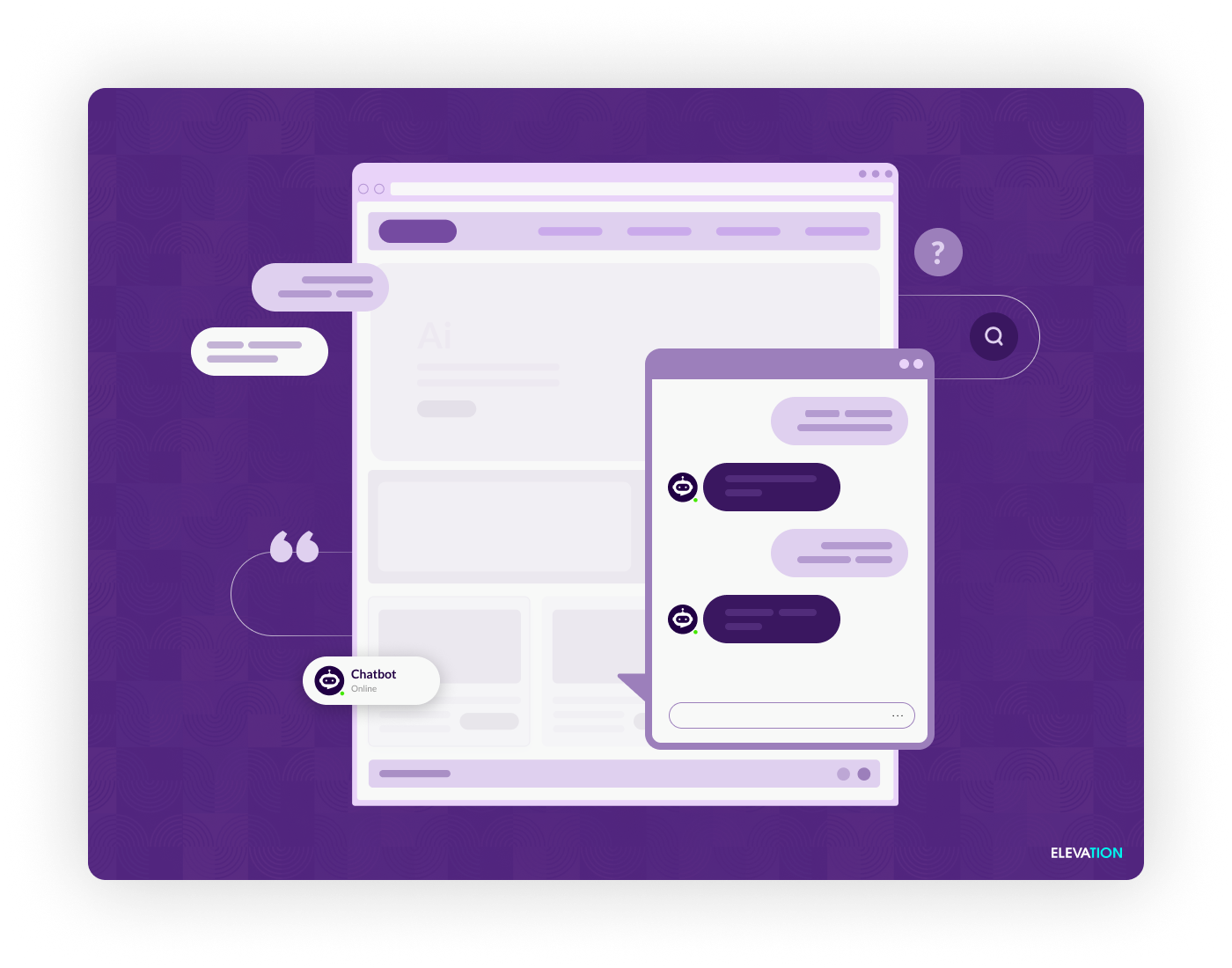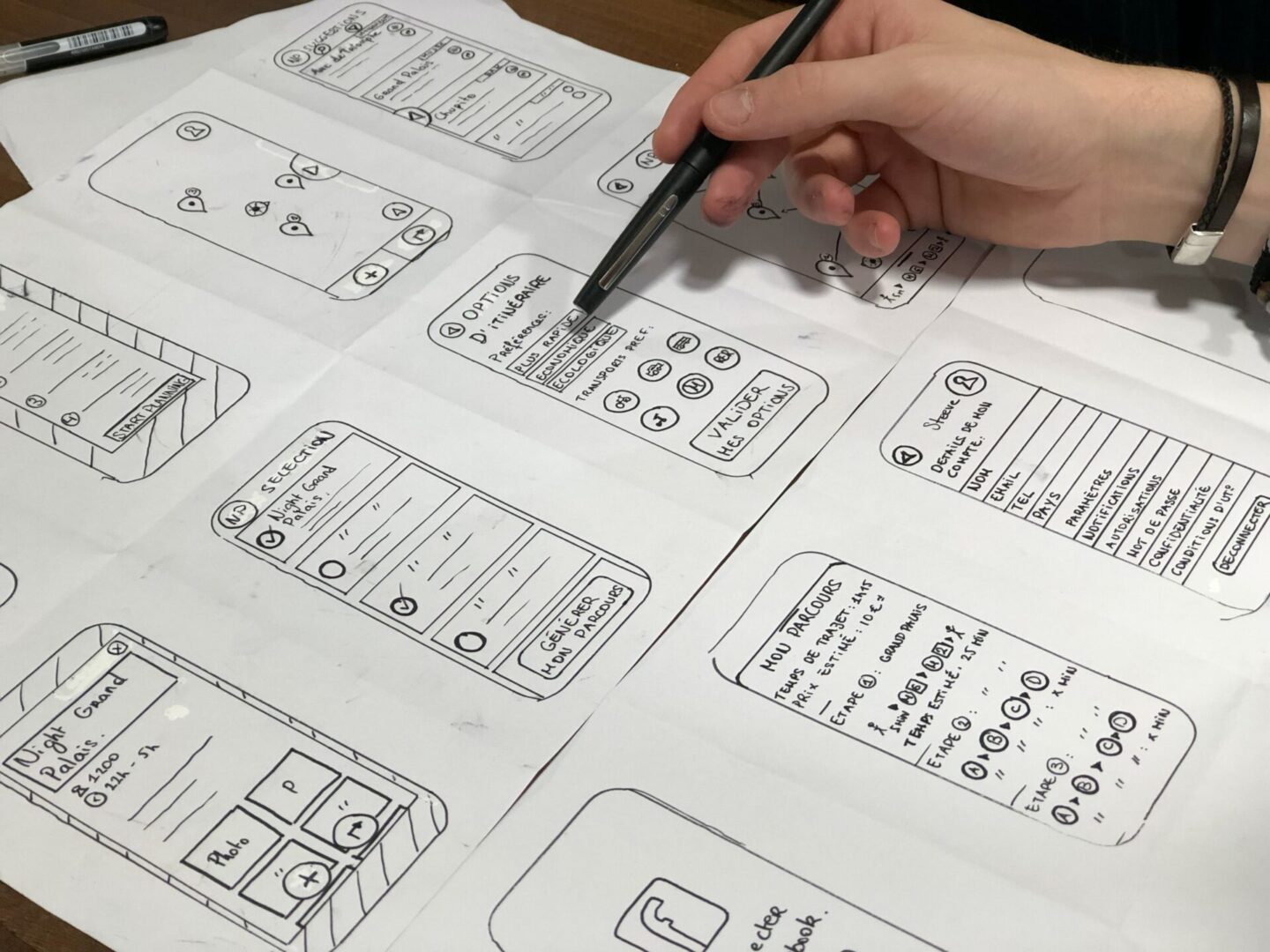So you’ve decided to get a new website for your nonprofit. How in the world do you get started? How do you decide what to do first, how to organize your content, what style to use, or whether you should change your logo?
Luckily, there’s an expert out there just for you: a User Experience (UX) Designer. What does a user experience designer do? He/She is like the interior designer for your website, deciding which information will go where, organizing content into folders and subfolders, and choosing the overall layout of colors, fonts, and styles on each page. According to Advomatic, “The academic study of user experience design emerged from a hybrid of technology, design and library science.”
In the UX phase, your designer will take a look at your site from the visitor’s perspective and organize content based on their unique needs and goals. This provides the following 4 benefits to your nonprofit:
Improved brand engagement
Your UX designer will be focused on giving users the content they want in the order they want it. If your audience prioritizes volunteer information, for example, that would be on the first page instead of buried somewhere in your site. Giving your website visitors the right content at the right time will ensure a positive first impression.
Lower development costs
If you invest up-front on your UX, you will save time and money later on further web development to fix broken or confusing content.
Lower support costs
Your website with little to no issues will result in satisfied site visitors and a lower bounce rate. If your UX is great and your visitors are happy, you can focus less on web support and more on furthering your impact in your community!
Improved usability and ease of use
By hiring a UX designer, you can meet the special needs of your unique audience by designing a website that gives them exactly what they are looking for. Your website will be easier to navigate and leave your visitors trusting your site.

The bottom line is that your visitors will be more likely to donate by using UX services when building your site. Good UX, especially on your donate page, will eventually lead to higher retention rates and an overall lower cost for website development and support.
We understand that many small to medium sized nonprofits face unique challenges with new website projects such as budget and internal skill limitations. First, as we previously mentioned, you have to look at UX as a long-term investment that will actually save you money on further development if everything is done correctly to create a fluid website in the first place. Secondly, good UX designers will take into account the skill set of your staff and will design your website accordingly. If your organization is small and relies on on the executive director or a handful of volunteers, the site design must focus on simplicity. “No one wants to waste time developing a custom menu that isn’t going to be used six months from now.”
Remember: UX design is the process of getting you from “We need a new website” to a designer helping you walk through each color, font, content piece, and style that will be used on each page of your website. Your designer’s job is to make your life easier while enhancing customer satisfaction and improving usability. Let him/her decide the ‘who’, ‘what’, ‘when’, ‘where,’ ‘why’, and ‘how’ of the website visit. When all of this is done well, be assured you will have to focus less on your website’s technical issues and more on all the good work you do in your community!


